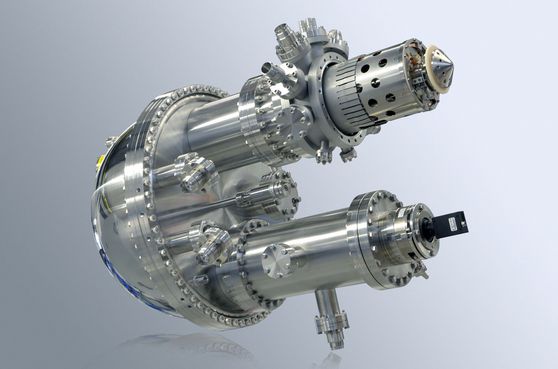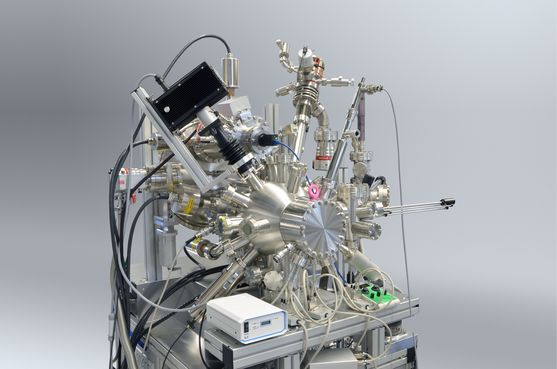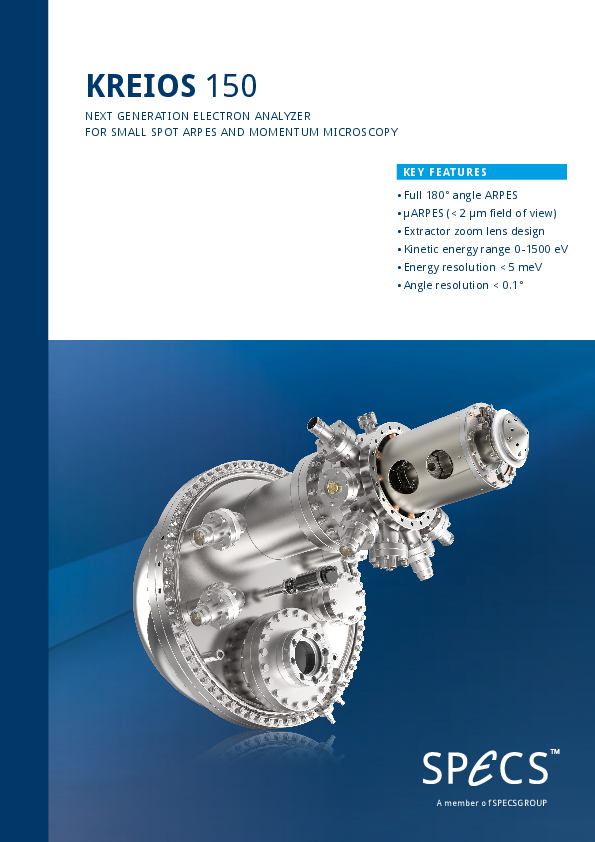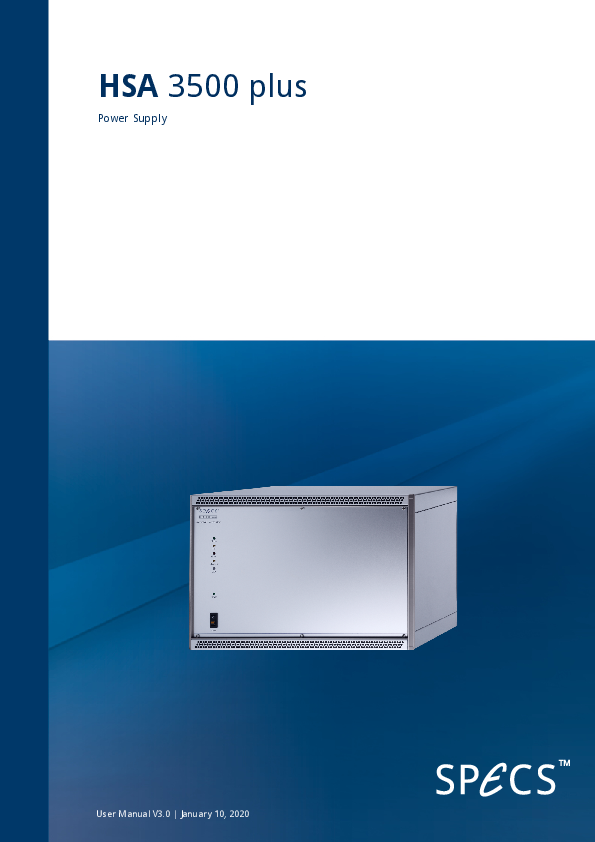
KREIOS 150 MM
Next Generation Electron Momentum Spectrometer for Small Spot ARPES and Momentum Microscopy
The KREIOS 150 MM is a new generation of electron spectrometers for high performance ARPES and PEEM. The unique lens systems combines and immersion lens for PEEM operation with a hemispherical energy analyzer scanning system for unrivaled ARPES measurements. Its lens system aquired the fill half sphere of the electron emission for ultimate angular acceptance of 180°.
The KREIOS 150 MM comes with a special lens system for momentum microscopy, showing a constant energy map or a real space map on the detector. Integrated deflectors allow changing the microscopy spot without moving the sample. The lens system features apertures to refine the k-space into high contrast and dark field PEEM, as well as field apertures to select a spatial region for µ-ARPES down to 2 µm field of view. The kinetic energy up to 1500 eV allows XPS and XPEEM measurements. With the new CMOS detector the KREIOS 150 is the most performing ARPES analyzer available. Due to the design of the KREIOS lens system and hemisphere, no artificial aberration correction is needed. Instead a second hemisphere can be upgraded to enhance the energy resolution or the electron transmission.
With a 2D CMOS detector is shows outstanding performance in countrate, linearity and a true pule counting mechanism. It combines a state of the art lens system with a proven hemipshere design for highest transmission and resolution.
This analyzer features the mometum microscopy mode for data aquisition. For enhanced energy resolution or transmission a special MM Twin version is available. For Spectroscopy, the KREIOS 150 can be used fully in spectroscopy mode.
SPECIFICATIONS
| Kinetic Energy Range | 0-1500 eV |
| Pass Energies | 1-200 eV Continously Adjustable |
| Magnetic Shielding | Double µ-Metal Shielding |
| Energy Dispersion | Hemisphere |
| Lens Modes | PEEM Mode, Momentum Resolved Mode |
| Measurement Modes | Snapshot Mode, Sweeping Mode |
| Detector | 2D CMOS Detector with Spin Option |
| Slits/Apertures | 8 positions for apertures and slits |
| Energy Window | 13% of Pass Energy |
| Electric Isolation | > 3.5 keV, 29 keV on lens system |
| Electronics | HSA + for KREIOS |
| Working Pressure | 10-11 to 10-7 mbar |
| Energy Resolution | < 25 meV in MM Mode (< 22 meV Achievable) |
| Angular Resolution | < 0.1° for 0.1 mm emmission spot for He I |
| k-Resolution | 0.008 Å-1 for 0.1 mm emmission spot @ He I |
| Acceptance Angle | ±90° full cone |
| Lateral Resolution | 50 nm (35 nm Achievable) |
| Smallest Acceptance Spot | 2 µm |
| Detector Channels | 1285 x 730 (with Channel Binning) |
| Field of View | 2µm (with aperture) to 200 µm |
| Working Distance | 4-10 mm |
| Mounting Flange | DN150CF (8" OD) |



